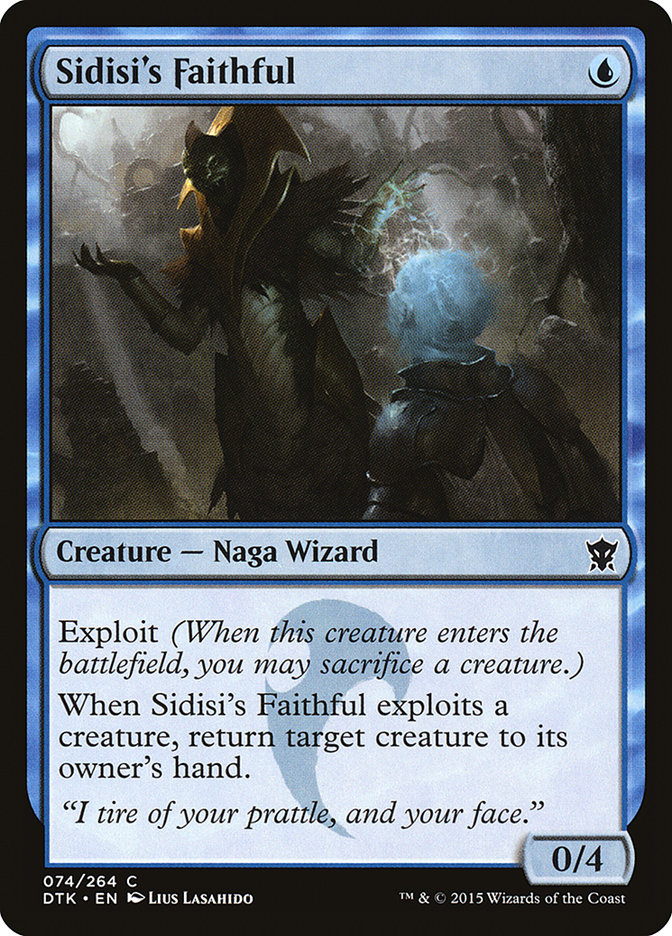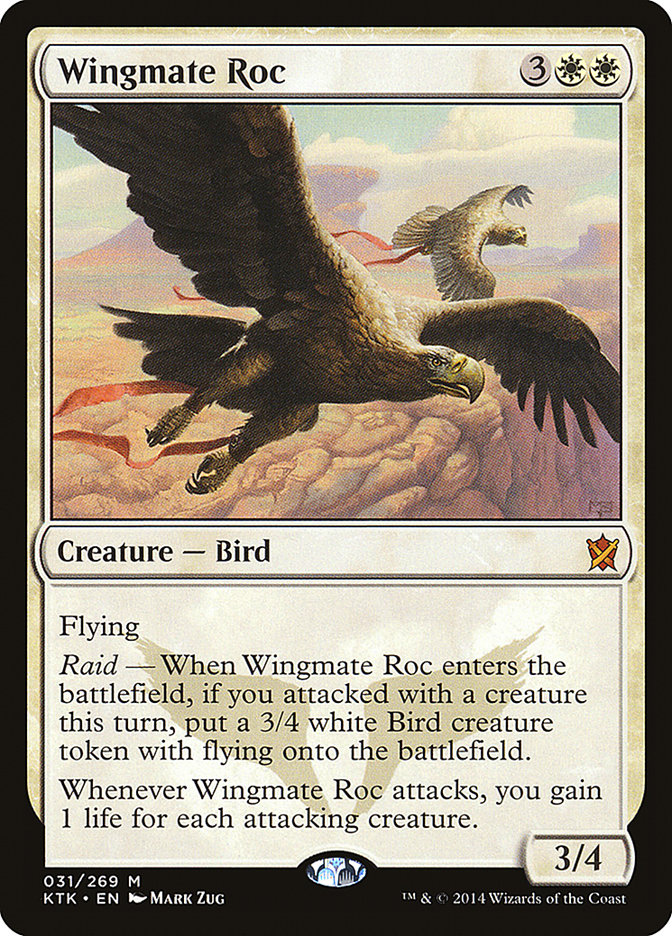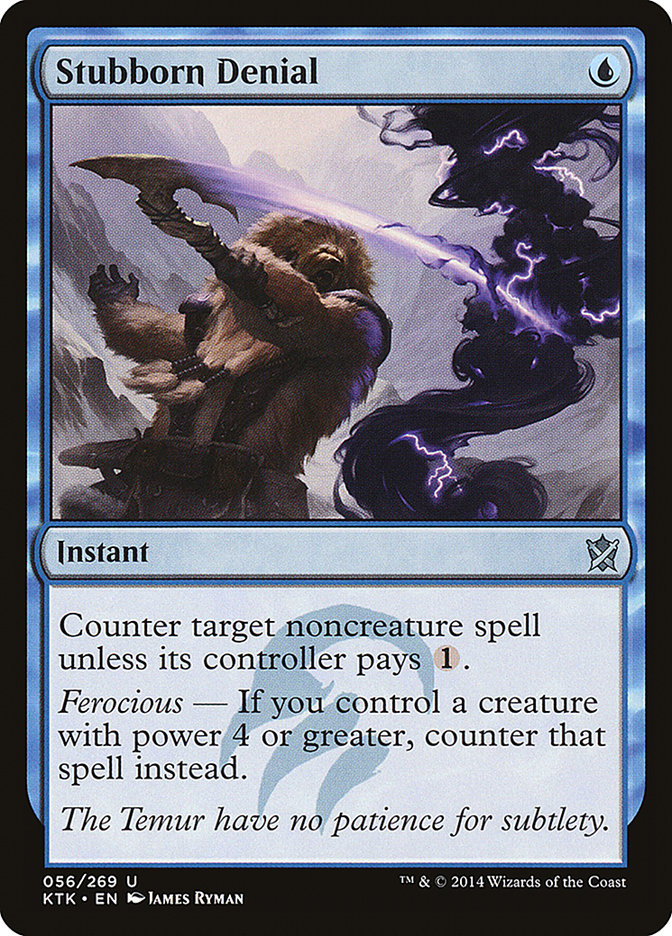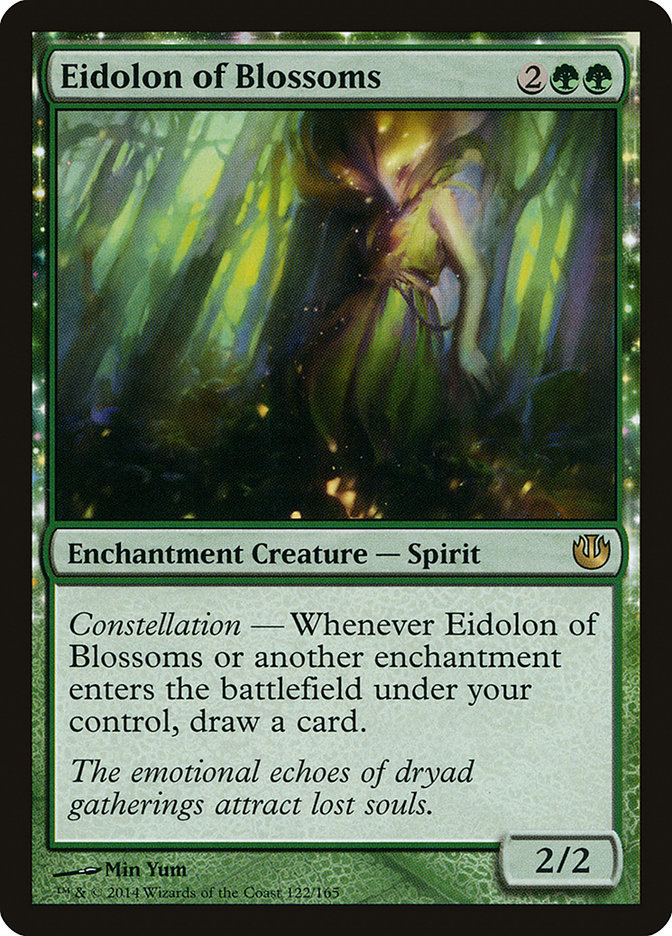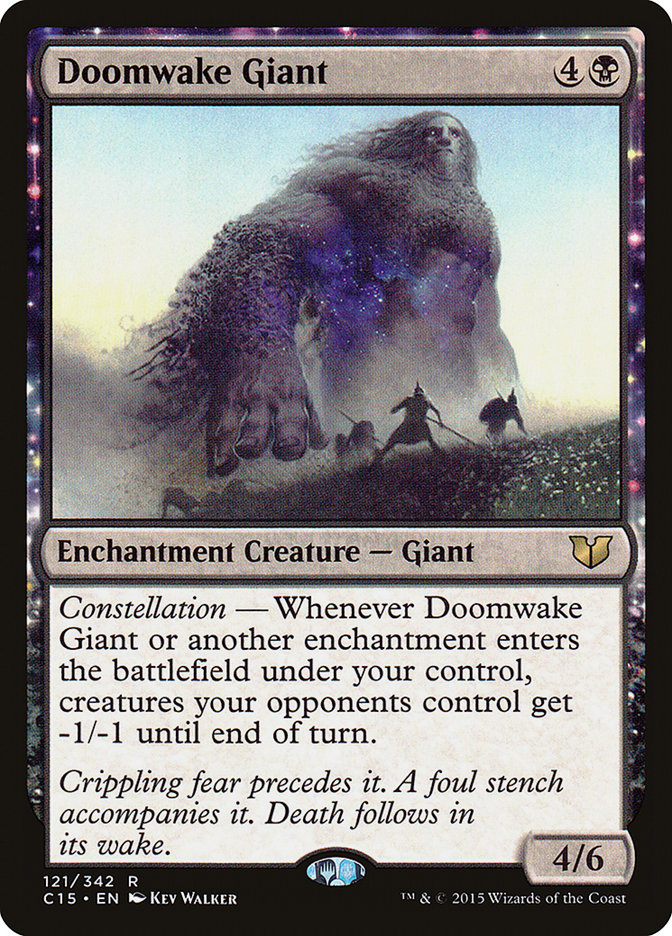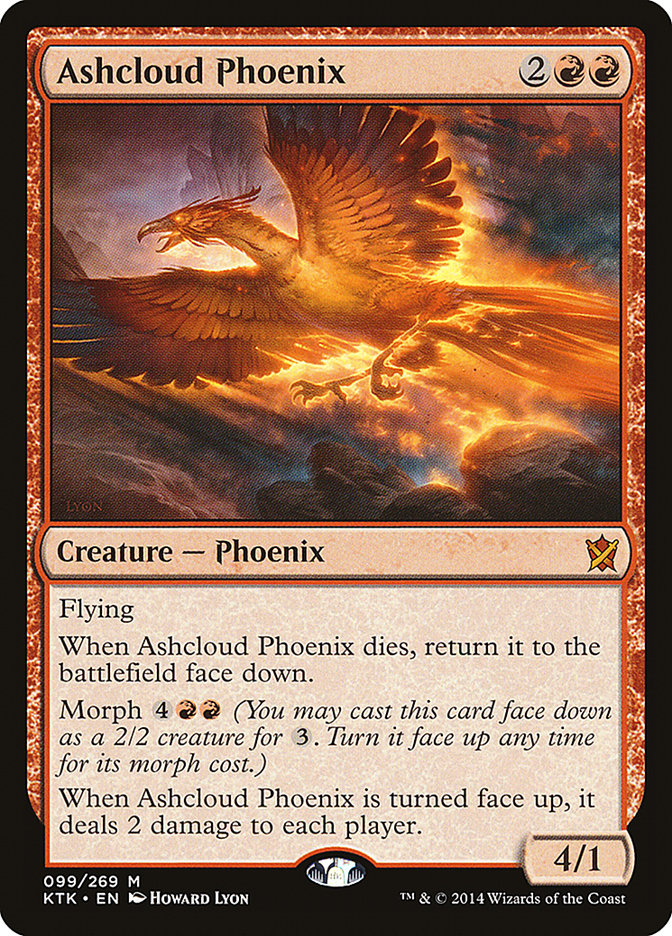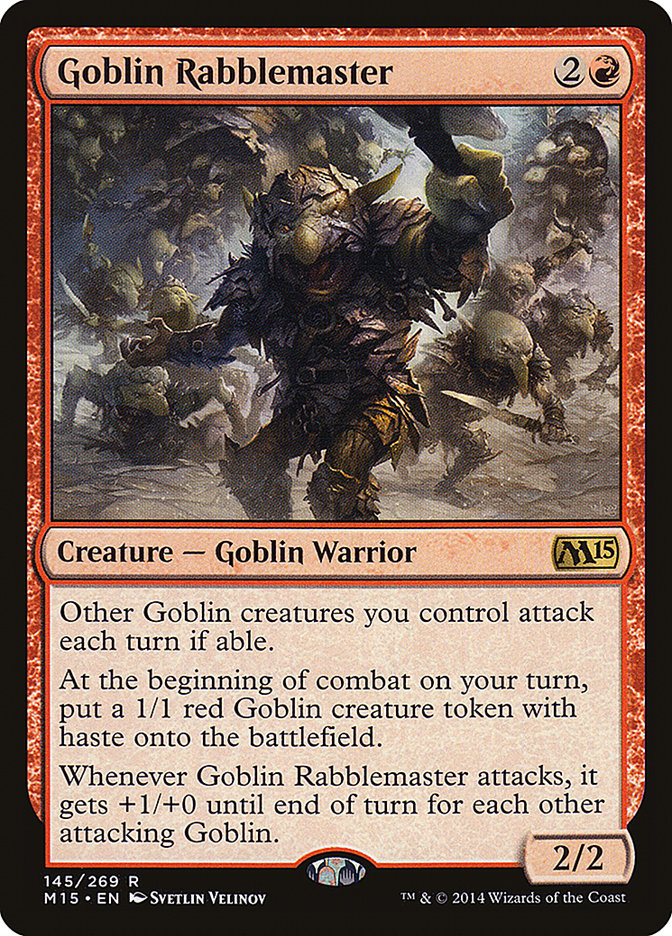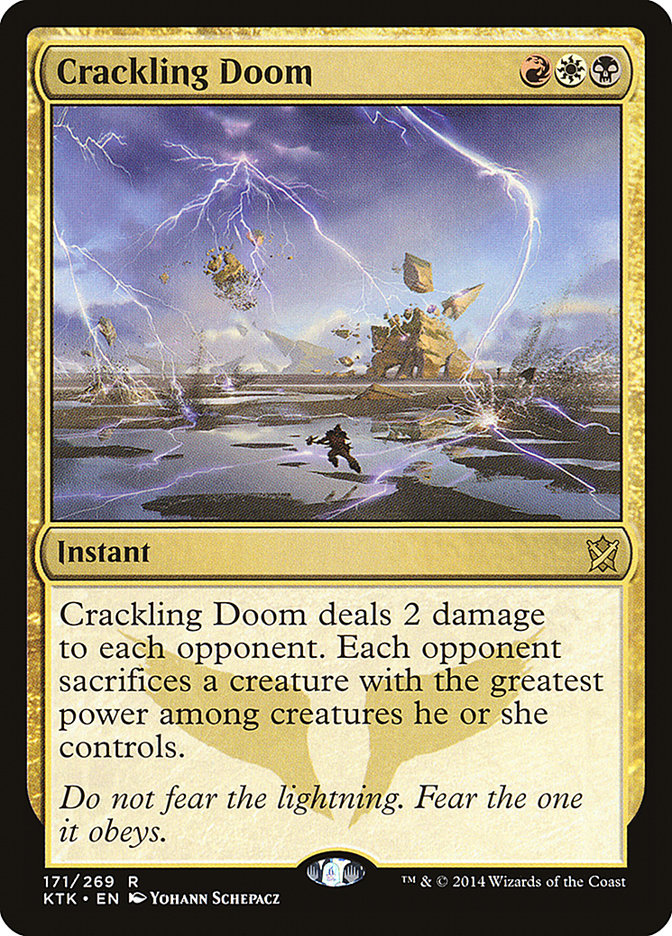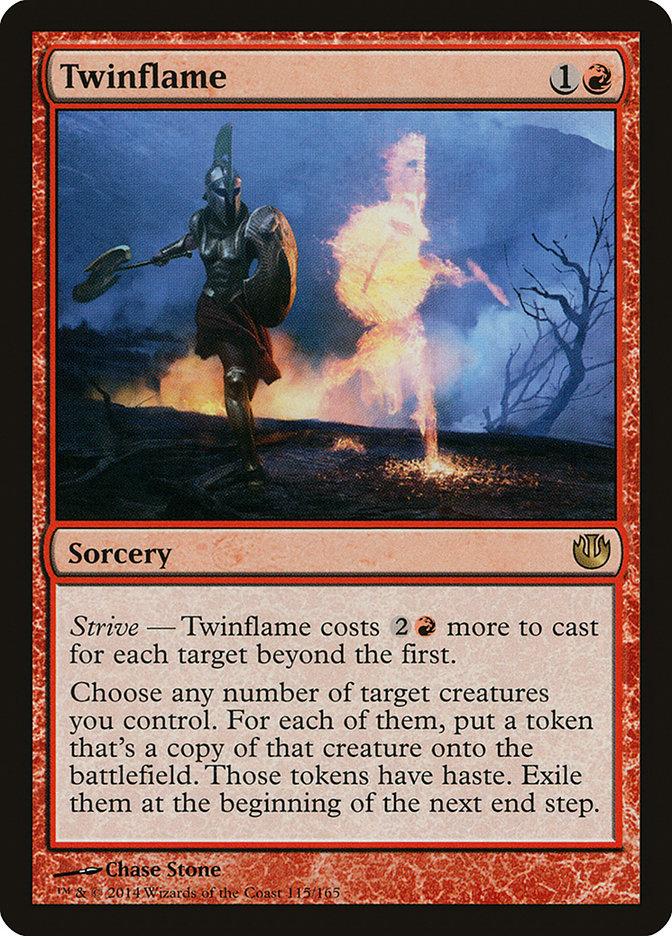I’ve been playing Magic for a long time, off and on for the last twenty years. What happened last weekend was a treat, and is definitely something that we don’t get to experience very often. We haven’t really seen a deck/strategy come together like this Eldrazi monstrosity did last weekend and crush a Pro Tour in a pretty long time, and the most interesting part about it all is just how many people played the deck.
It’s very easy to see that Eldrazi dominated #PTOGW due to the six copies of the deck in the Top 8 (three Colorless CFB/FtF, two U/R East-West, and one Processor Eldrazi), but in all reality, only 7% of the field actually played the deck. I want to say that this feels like Pro Tour Paris in 2011 with Caw-Blade, but even then Caw-Blade didn’t dominate like this, though it did go on to eventually spell the end of Jace, the Mind Sculptor and Stoneforge Mystic in Standard.
The pieces were all there. Most people had their eyes on the big side of Eldrazi Temple and Eye of Ugin, but the proper approach was to be as fast and broken as possible.
I’m not sure what exactly is going to happen to Modern, but I can tell you that while the games may be over a bit more quickly, it’s about as fun to play against one of these Eldrazi decks as it was to play against Amulet Bloom.
With a week off on the The SCG Tour® and #SCGLOU being Modern, which I feel has to be up in the air, I’m going to battle in Oath of the Gatewatch Game Day this weekend, and I’m just going to play Four-Color Rally. I’m going with Jacob Baugh’s list because it’s great, and I’m planning to jam this deck over and over until it’s out of the format.
Creatures (28)
- 3 Nantuko Husk
- 2 Elvish Visionary
- 2 Grim Haruspex
- 3 Sidisi's Faithful
- 1 Liliana, Heretical Healer
- 4 Jace, Vryn's Prodigy
- 2 Catacomb Sifter
- 4 Zulaport Cutthroat
- 3 Ayli, Eternal Pilgrim
- 4 Reflector Mage
Lands (24)
Spells (8)

Gaining Reflector Mage has really pushed this deck even farther ahead of the pack, and I want to capitalize on that. Even with Four-Color Rally being a known quantity, the current forms of hate just aren’t good enough. Hallowed Moonlight is embarrassing, and while Anafenza, the Foremost and Kalitas, Traitor to Ghet are both outstanding cards, Reflector Mage and Sidisi’s Faithful easily handle them.
Ultimately, I feel like Four-Color Rally was a bit under the radar in development and there just isn’t enough efficient hate. Thankfully it’s not the easiest deck to pilot, but I love these weird puzzle-like decks!
One of my other loves is Dragons, obviously, so I do have Tom Ross’s R/B Dragons deck available if I feel so inclined, but for now I’m going to just stick to Four-Color Rally and reap the rewards of familiarity with the deck.
Standard and Modern aside, I want to talk about another one of my Magic loves: finance.
You see, before I ever made the trip to Roanoke to try and get a job at StarCityGames.com and start The SCG Tour® grind, I used to grind the trade floors. Think binders stuffed in backpacks. Playing in the events was always fun, but I looked forward to getting in between rounds so that I could go hang out in the trade areas and set up shop.
I used to be that guy that had everything, and while I looked like a shark, I was anything but.
Even before everyone and their mom had smartphones and could protect themselves while trading, I was working small margins correctly and making profits by trading smartly and helping everyone out so that they would continue to trade with me.
I want to talk a little about how to trade effectively, maybe even make some money at it, and what to do in times like these.
Trade Routes
The Magic trade game is nothing like how it used to be. Modern as a format has changed things significantly, causing cards to fluctuate in value so dramatically that it can be hard to ever actually want to get rid of something.
That Eye of Ugin that you had for so long has finally climbed up to the $5-$10 range with it being a solid one-of in G/R Tron and rumors of new Eldrazi coming out in the new set. The bigger versions start crushing online and suddenly it’s starting to spike. What’s the ceiling, though? The Pro Tour is coming up and who knows what could happen. Now we have a busted deck, cards hitting $50+ even with reprints, and no one having any idea what’s going to happen in terms of bannings.
Things are a-changing, but there was always a foundation that I used to ground myself. When I used to grind the trade tables I always had a few rules that I would impose upon myself.
Always use the same source for pricing, be it an online site or a vendor at an event.
This wasn’t always the case as everyone didn’t always have a smart phone, so it had always been important to me to be up-to-date on prices. You used to be able to gauge someone’s pricing knowledge by asking them what they value stuff at, but now it’s much safer to just use available pricing.
Even if someone claims to have knowledge of a card, I will usually look it up just to make sure. Sometimes I will just do it while we are talking or looking at other cards, and I won’t say anything unless there is a discrepancy.
Never actively try to trade out-of-print staples for new cards with unproven price records.
This can be tough since most people just keep all of their trade stuff together in one binder, but you can usually spy someone who is actively trying to only “trade up” when they have nothing but new speculative cards in their binder but are only looking for expensive, highly playable, out-of-print cards.
Now, there really isn’t anything wrong with trying to “trade up.” It is one good way of trying to increase the value of your collection. There have even been times where I have gone against this and traded off things that I probably should have kept because I valued having access to the new cards more than holding onto extra copies of others, but in general, when you are trading your out-of-print cards for newer in-print cards, you run the risk of losing value.
There are exceptions to this, of course, when the in-print cards have older format applications. Think Khans of Tarkir fetchlands; Jace, Vryn’s Prodigy; and Collected Company. These cards are all likely safe pickups even while they are in-print.
Always be ahead in value on a trade that I’m making.
Now, this isn’t exactly what you think it is. I’m not talking about the direct value of cards. I’m not going to turn down a trade because I’m getting $50.00 and you’re getting $50.00 worth of cards because I’m not making any value. Where this comes into play is where I have made the most value and money out of trading for Magic cards.
I know what I have invested into the cards that I am trading, and I have estimates on the price trajectory on the cards that I am trading for and trading away. This is where I am making my “value.”
A good example is when you pick something up while it is low and then get to trade it off after it has made an increase.
If you have $10 in trade invested in Card X, and when it hits $20 and you get to trade it off for two more $10 trades, then you have doubled your “value.” This begins to compound even more if the cards that you are picking up are cards that you think may increase in value.
This can be risky, of course, as there are always variables. A good example happened before Battle for Zendikar came out. I expected Wingmate Roc to go up, as it seemed to be pretty well-positioned in the decks and format that I was looking at for the new Standard; as such, I traded into them pretty heavily when they were below $5. Likewise, I was hard into the Omni-Tell deck and knew that Dig Through Time was far and away one of the most powerful cards in Legacy. I knew that there was a chance that it could be banned, but if it wasn’t, there was no way that it would stay at $5 for the long run.
In the end I was able to make quite a bit in value by trading off Wingmate Roc after it started to spike again post-Battle for Zendikar. I also currently have over 25 copies of Dig Through Time. You win some, you lose some.
As long as you know, for the most part, what you have invested in your cards and some kind of plan on the projected value of them, then you can make a decision on what kind of trades you want to make. Modern does throw a bit of a wrench in this when it comes to trading Modern cards for Standard cards, but it does give you a pretty good guideline. If you want some Modern cards and your trading partner is only interested in some hot new Standard action, then you are probably fine in making the trade and trying to turn your Modern goodies into other Modern goodies.
Using this method allowed me to operate on small margins but make up for it in quantity of trades. It’s easy to work out deals with people and they usually get what they are looking for, which builds rapport and will let you get sweet deals in the future.
A good tip for this: whenever I was just focused on trading and trying to make some money on the weekend, I would make myself familiar with the buylist of whatever vendor was at the event and work off that. I would actively try to acquire cards whose buylist and retail were close, and if I could get enough value out of my cards for cards that I planned on buylisting, then it would be great.
Example: If I have $6 into this $8 card and can trade it along with some chaff for a $15 card that is buylisting for $11 because of popularity, then it would be a great win on the trade!
Never be afraid to say “no thanks.”
One of the things that I used to see way too often was where one trader, who is usually much more experienced, is trading with someone and they are pushy, suggestive, or down right aggressive on a trade. A lot of the time it can be a little difficult to just say “no thanks” and go about your business.
I do this a lot, especially when I’m trading with other “grinders.” Usually it’ll come down to seeing if either of us has sweet foils or something specific that the other is looking for, but when we open each other’s binders and there are pages of fetchlands and Thoughtseizes and Snapcaster Mages in both of our binders, we kind of have the same idea in mind and aren’t really going to get anywhere.
Don’t get ripped off when trading with someone who says they are representing a card shop.
Too frequently I would run into someone who had all kinds of awesome things. They usually even have their binders sorted by price, but when they would tell me that they were trading for a card shop and could only give buylist or buylist plus some percentage on cards, I would just politely end the trade and move on.
They are free to try and set the terms of a trade, just as we are all free to politely decline and move on. In addition, if I were buylisting or trading in cards, I would respect the vendors who are either running the event or paid money to vend at the event and give them my business.
Personally, I enjoy trading with Standard cards. There are usually a few big movers, but there are always a lot of cards that have potential, and if you make a play on something expecting it to gain, you really won’t be out too much if it flops.
Not Quite Specs
Each set I usually pick a couple of cards that I like to gain value and either buy or trade for a handful of them to set aside. Sadly, I am usually pretty bad about liquidating at the right time, so I just have a whole bunch of some cards. Some have been great, others not so much. Here are some of my “not quite specs.”
Even though these were also promos, I still felt like they had some room to grow because of how busted I thought the constellation deck was with Frontier Siege. Ultimately they never really moved more than a buck or so and I have a healthy stack of these enchantment creatures.
During the Khans of Tarkir pre-sale, Ashcloud Phoenix was as low at $1.99. This prompted me to pick up a handful because they seemed great on paper and were playing very well in the new decks that we were testing.
There was a period of time where this card was extremely popular and even spiked to the $10 range. Sadly, I was very slow in trying to get rid of any of them and still have a decent stack of this Mythic Rare.
I saw that this card was bonkers very early on. I didn’t directly speculate on it, but when a good friend asked me what he should do with his $200 of IQ winnings, I told him to buy as many Goblin Rabblemasters as he could when they were still $5.
Ultimately he put them in my hands to trade off as they were approaching $20 and we made plenty of profits trading them for Khans of Tarkir fetchlands!
During Khans of Tarkir spoilers, Brian Braun-Duin and I found out that Crackling Doom was insane and I felt like it was pretty underpriced, so I picked up a handful. It never really made any moves until the Jeskai Black deck emerged. I was able to move a handful of them as they climbed to the $5 mark, but that only lasted for so long.
I worked on the Jeskai Ascendancy deck with Brian Braun-Duin for #PTKTK and thought that it was busted. At the time it was only worth $0.49, so I went ahead and picked up quite a few copies. Even though it did Top 8, the card never moved from there, so at some point I will just have to make some body armor out of Twinflame.
To date, my biggest and most successful speculation was Jace, the Mind Sculptor. After he was banned in Standard, he quickly dipped down into the $30.00 range and I went on a trading spree. Many players only played Standard at the time and were eager to get rid of their Jaces and Stoneforge Mystics so that they could get cards they could actually play with in their Standard decks.
I believe at one point I had over 30 copies of Jace, the Mind Sculptor. I’ve slowly traded them off over the years and am down to just a few playsets, but it was still pretty sweet to recognize that the card was just insane in any format that you could play it in and that it would likely never be reprinted (which they did, of course, eventually).
Tips for Easy Reference
Here is a condensed version of tips for newer traders, or just anyone who is looking to be successful in their trading!
– Trade for cards that will likely retain value or go up in value. These categories are popular out-of-print cards, format staples and unique cards that have applications in other formats (e.g. Collected Company), or newer cards that have extreme potential (e.g. Kalitas, Traitor of Ghet, who doubled in price over a single weekend but was obviously an extremely powerful card to begin with).
– Be agreeable with your trading partner. If one side isn’t happy, then it isn’t a successful trade.
– Small margins are fine for value. Be in the know about what you have invested in your cards and what cards may be movers in either direction.
– Don’t be afraid to just say “no thanks” and walk away!
Last, I want to point out that we all have our “oh my gosh” stories where we found some kid who had Fetchlands in the back of their binder and wanted a handful of green uncommons for them, and even though we went ahead and did it and told all of our friends about it, deep down we felt terrible. I can say that overall, I became a happier and much more successful trader when I became the guy who educated that kid about their cards and helped them with their deck than when I got as much value as I possibly could out of them.
Don’t be afraid to trade! It’s fun and a great way to build a collection and decks, and right now is a great time to trade. You can very easily open a sweet Expedition in your local game store’s draft and trade it for the cards that you need to finish your Standard deck. Now, if only I could find the energy to sort through all these cards and get my binders back together!
What are your latest and greatest trade stories? Make any friends on the trade floor?





